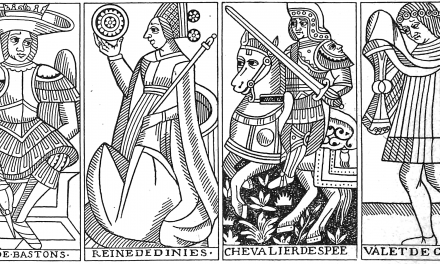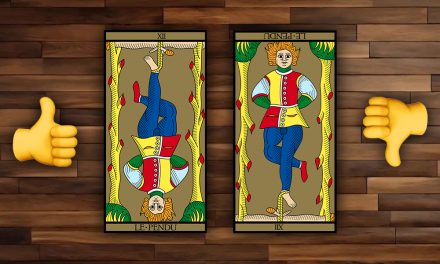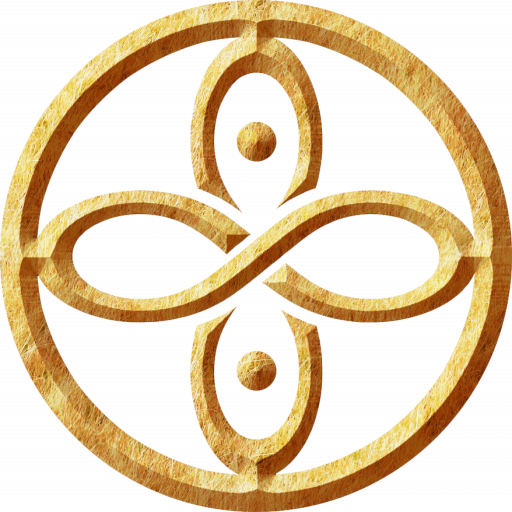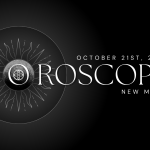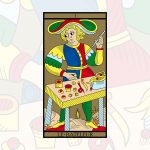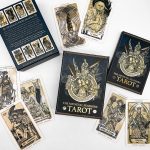One of the most common questions beginners ask when starting out with Tarot is: “What’s the difference between a Tarot and an Oracle?”
It’s true that, on paper, these two terms seem interchangeable. And yet, it’s not quite that arbitrary. Let’s break it down!
Historically, what is an Oracle?
Originally, the word oracle referred to the prophecy itself, the act of announcing the future. Later, the term came to describe the person who delivers the prophecy: the seer or diviner. Eventually, the word oracle ended up referring to the tool that allows the practitioner to make the prediction: their medium. This medium, traditionally called a mancy, has become known in everyday language as an “oracle.”
So, the word oracle can refer to any medium (or mancy) that allows a practitioner to deliver a prediction. But if we follow historical definitions, “oracle” refers to the tool, the practitioner, and the prophecy itself. Which makes this kind of sentence technically accurate (though mind-bending): “The oracle of the oracle gave an oracle.” Yes, it’s a bit of a headache, isn’t it?
So… is Tarot an Oracle?
Tarot is very often used for divination, and by definition, that makes it an Oracle. So yes, all Tarots are Oracles, but not all Oracles are Tarots. Why? Because you can also use runes, pendulums, coins, seashells, or even markings in the ground to read the future.
What makes a Tarot… a Tarot?
This leads us to a deeper question: what qualifies a deck as a “Tarot”? What distinguishes it from other card decks?
And hidden within that is an even trickier, more elusive question: What does the word “Tarot” actually mean? What did it originally refer to?
Anyone who claims to have a definitive answer is either a genius or a fabulist, because the truth is: we have several theories, but no certainty about which one is right.
A Late and Shapeshifting Term
First, the word “Tarot” is relatively late in history and has taken on multiple forms and meanings. Today, we use “Tarot” to refer to the deck as a whole. But a few centuries ago, “the Tarots” referred not to the game, but to the individual cards. For example, the Magician was a Tarot. So was the High Priestess, the Empress, and so on.
Etymology: Many Theories, Few Survivors
There are many etymological theories, but few hold up. Let’s immediately rule out the Egyptian-origin myth, especially the one from Court de Gébelin who claimed that “Tarot” meant “royal path” in Egyptian—despite the fact that Egyptian hadn’t yet been deciphered by Champollion, and the Egyptian language doesn’t even have the letter “o”. In short, yet another romanticized invention.
What might be worth considering is an Italian etymology. In French, we still use the term tarotage to describe the pattern on the back of cards—identical on each one to avoid recognition when they’re face-down.
Interestingly, in Italian, the historical word tarocchi refers to the Tarot deck, and the verb taroccare means to imitate, to falsify, to counterfeit. This may be linked to the taroccata technique, a method for stamping gold foil patterns—used frequently on noble Tarot decks of the past. So, the word Tarot might originally have referred to decks with stamped gold motifs, especially on the backs. If that’s the case, few decks could actually boast the title of “Tarot” today.
Beyond Etymology: Structure is Key
That said—and setting aside these intriguing etymological debates—what truly distinguishes the Tarot deck today from all other card decks around the world is something almost genetic to its identity: its structure.
And for that, I invite you to refer to the page specifically dedicated to this topic.



